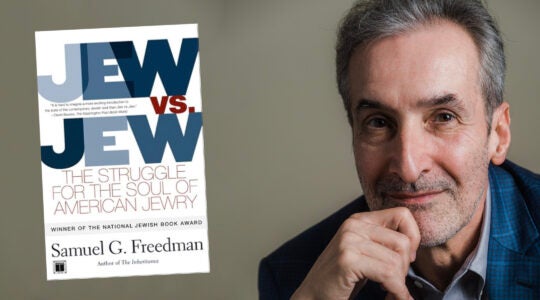The Oct. 28 Jewish Week column by Gary Rosenblatt on a recent conference of Jewish demographers (“How Many U.S. Jews, And Who Cares?”) sheds some light on one of the greatest challenges that has faced the Jewish people throughout our history — our tendency to fragment rather than coalesce. Given the fact that however one counts, we Jews are a miniscule fraction of the 7 billion human beings on the face of the earth, it is a sad fact that more often than not, we squander the resources we have at our command by bickering, rather than finding better ways to work together.
As Chief Rabbi Jonathan Sacks of England put it during a presentation that he made this past week at Northwestern University, three times during our history we faced the threat of annihilation during a time of dispersion: when Joseph was sold into slavery with the rest of our people following, and during and after the destructions of the first and the second Temples. In between those times, and for all of the years after, we have honed our unique ability to tear each other down, rather than build ourselves up.
Thankfully, we have survived, but just imagine how much greater impact we could make if it were otherwise? The National Jewish Population Study 2000, the subject of most of the above-referenced article, offers a good case in point.
One would think that academic experts in Jewish demography who utilize the results of studies such as NJPS in the classroom and in their research, might have seen the benefit of coming together in a unified effort to make the 2000 study better. But, as [Jewish Federations of North America CEO] Jerry Silverman correctly points out in the article, that was not to be the case.
Beginning with my first exposure as a volunteer to the planning of that study in the fall of 1997 and continuing through the implementation period and the publication of results starting in 2001-02, and finally when I became CEO of United Jewish Communities in 2004, it became clearer and clearer to me that in this matter, nothing at all might be better than something.
While I could join with the best of the critics in noting the things that could have been done differently in the study, [sociologist] Barry Kosmin’s quote in Rosenblatt’s article fairly sums up the reality about total population: “One person’s Jew is another’s gentile.”
Further, while the article notes that the 1990 NJPS put a number on the breadth of intermarriage, it also notes that the experts at the recent conference at Brandeis were at a loss to come up with any “practical outcome” for 2000. Isn’t the continuation of staggering intermarriage rates, with its impact on diminished and radically altered Jewish identity, enough of a trend to contend with and analyze? Did the demographers want more?
Research that doesn’t uncover anything new goes on all of the time. Just ask Leonard Saxe, whose Cohen Center at Brandeis University has, I believe, conducted research on Birthright Israel participants on an ongoing basis. Does Birthright need the same good news discovered on an ongoing basis? Could that money be better spent sending more young people to Israel?
In the absence of a new NJPS, Saxe is cited as doing research that is based upon aggregating myriad studies of the Jewish community, coming up with estimates of total Jewish “population,” and no doubt other “findings.” The problem is that there is no unified approach to the methodology employed in these studies. Since when did adding up apples and oranges achieve acceptable results? How much better such quick and dirty analysis might be if the experts who conduct the individual studies could at least agree on common techniques for sample selection and core questions addressed to interviewees.
Alas, that objective, along with the appearance of the Messiah, will have to wait a bit more.
Howard Rieger is former president and CEO of United Jewish Communities.
The New York Jewish Week brings you the stories behind the headlines, keeping you connected to Jewish life in New York. Help sustain the reporting you trust by donating today.




